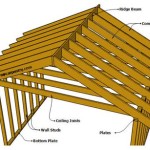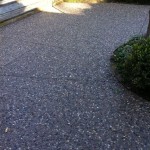Is A Flagstone Patio Expensive? A Comprehensive Cost Breakdown
Flagstone patios are highly sought-after outdoor features, valued for their natural beauty, durability, and versatility. However, the question of affordability invariably arises when considering this type of hardscaping. Determining whether a flagstone patio is expensive requires a thorough examination of the various factors contributing to its overall cost. These factors include the flagstone material itself, installation labor, site preparation, and potential ongoing maintenance.
Understanding these elements is crucial for homeowners planning to install a flagstone patio. This article will explore the cost components in detail, providing a comprehensive breakdown that helps assess the financial implications of choosing flagstone as a patio material. We will delve into the price ranges of different flagstone types, examine the nuances of installation costs, and consider the long-term expenses associated with maintaining a flagstone patio's aesthetic appeal and structural integrity.
The Cost of Flagstone Material: Type and Availability
The primary cost driver for a flagstone patio is undoubtedly the flagstone material itself. Flagstone is a generic term encompassing various sedimentary rocks, primarily sandstone and slate, known for their flat, layered structure. The price per square foot of flagstone can vary significantly based on several factors. These factors include the type of stone, its thickness, its color, and its availability within a specific geographic region.
Different types of flagstone exhibit distinct characteristics that influence their price. For example, Arizona flagstone, often characterized by its reddish-brown hues, is commonly available in the Southwestern United States and tends to be relatively affordable in that region. Pennsylvania bluestone, known for its blue-gray color and durability, may command a higher price, especially if it needs to be transported over long distances to areas where it is not locally sourced.
The thickness of the flagstone also plays a crucial role in pricing. Thicker flagstones, typically ranging from 1.5 to 2 inches, are generally more expensive than thinner varieties. Thicker stones offer increased durability and are often preferred for patios that will experience heavy foot traffic or be subjected to harsh weather conditions. Thinner flagstones, while more economical, may be suitable for patios with lighter use or for decorative applications where structural strength is less critical.
Color variations within flagstone can also affect the price. Certain colors or patterns might be more desirable or harder to source, leading to a premium. The availability of specific colors can depend on the location of quarries and the demand for different aesthetics. Flagstone featuring unique veining or distinctive color blends often fetches a higher price due to its rarity and aesthetic appeal.
Geographic location is a significant determinant of flagstone cost. Transporting heavy stone materials over long distances adds to the overall price. Therefore, flagstone quarried locally will typically be more affordable than stone that must be shipped from elsewhere. Homeowners should research local quarries and suppliers to identify the most cost-effective flagstone options available in their area.
In addition to the price per square foot, homeowners must also factor in potential waste. During installation, some flagstones may need to be cut or shaped to fit the desired layout, resulting in discarded material. It is advisable to purchase slightly more flagstone than the exact square footage required to account for potential waste and ensure an adequate supply for the project.
Installation Costs: Labor and Site Preparation
Beyond the cost of the flagstone material, installation represents a significant portion of the overall expense. Installation costs encompass labor charges, site preparation expenses, and the cost of any necessary base materials. Labor costs can vary depending on the complexity of the patio design, the skill level of the installer, and the geographic location.
The complexity of the patio design significantly influences labor costs. A simple, rectangular patio with evenly sized flagstones will generally be less expensive to install than a more intricate design featuring irregular shapes, curves, or intricate patterns. Intricate designs require more time and skill to execute, leading to higher labor charges.
The skill level of the installer is another critical factor impacting installation costs. Experienced and highly skilled installers typically command higher rates due to their expertise and ability to ensure a high-quality, durable patio. Hiring a qualified installer is crucial for minimizing the risk of future problems, such as uneven surfaces, loose stones, or drainage issues. While less experienced installers may offer lower rates, their work may not meet the same standards of quality and longevity.
Site preparation is an essential step in the installation process and can add significantly to the overall cost. Proper site preparation involves excavating the area, leveling the ground, and installing a solid base layer. The base layer typically consists of compacted gravel or crushed stone, which provides a stable foundation for the flagstones. Inadequate site preparation can lead to patio instability and premature failure, so it is critical to invest in this aspect of the project.
The cost of site preparation can vary depending on the existing condition of the ground. If the area is uneven, heavily sloped, or contains significant amounts of vegetation or debris, more extensive excavation and leveling will be required, increasing the cost. In some cases, it may be necessary to install drainage systems to prevent water accumulation and erosion under the patio, further adding to the site preparation expenses.
In addition to the base layer, installers may also use polymeric sand or mortar to fill the joints between the flagstones. Polymeric sand is a sand-like material that hardens when exposed to water, creating a firm and stable joint. Mortar is a traditional cement-based material used to create a more permanent and rigid joint. The choice between polymeric sand and mortar depends on the desired aesthetic and the level of maintenance required. Mortar joints are generally more durable but can be more prone to cracking and require more maintenance over time.
Long-Term Maintenance and Repair Costs
While a flagstone patio offers durability and longevity, it is essential to consider the potential long-term maintenance and repair costs associated with this type of hardscaping. Proper maintenance can extend the life of a flagstone patio and preserve its aesthetic appeal.
One of the primary maintenance tasks is regular cleaning. Flagstone patios can accumulate dirt, debris, and stains over time. Regular sweeping and occasional washing with a mild detergent and water can help keep the surface clean and prevent the buildup of grime. Power washing can also be used to remove stubborn stains, but care must be taken to avoid damaging the stone or the joints between the stones.
Weed control is another essential aspect of flagstone patio maintenance. Weeds can grow in the joints between the stones, detracting from the patio's appearance and potentially damaging the joints over time. Regular weeding or the application of herbicides can help prevent weed growth. Polymeric sand joints can help inhibit weed growth, but they may still require occasional maintenance.
Over time, the joints between the flagstones may require repair or replacement. Polymeric sand joints can erode or crack, requiring periodic reapplication. Mortar joints can also crack or crumble, necessitating repointing or complete replacement. The frequency of joint repair depends on the quality of the materials used, the exposure to weather, and the level of foot traffic.
In some cases, individual flagstones may crack or become loose. Cracked flagstones can be repaired with epoxy or replaced entirely. Loose flagstones can be reset by lifting them, adding fresh mortar or sand to the base, and carefully replacing the stone. Addressing these issues promptly can prevent further damage and maintain the patio's structural integrity.
Sealing flagstone can help protect it from staining and weathering. Sealants create a protective barrier that repels water and prevents dirt and spills from penetrating the stone. Sealants can also enhance the color of the flagstone, giving it a richer, more vibrant appearance. The frequency of sealing depends on the type of sealant used and the level of exposure to the elements.
In regions with harsh winters, proper winterization is essential for preserving the life of a flagstone patio. This may involve removing snow promptly, avoiding the use of de-icing salts that can damage the stone, and ensuring adequate drainage to prevent water accumulation and freeze-thaw damage. Taking these precautions can help prevent cracking and spalling of the flagstone.

Average Flagstone Patio S In 2024 Forbes Home

How Much Does A Flagstone Patio Cost 2024 Data

Is Flagstone Er Than Pavers And What Are Its Pros Cons

Flagstone Patio Ideas Cost How To Install Landscaping Network

How Much Does Flagstone Cost Landscaping Network

How Much Does Flagstone Cost 2024 Data

Value Vs Cost To Install A Paver Or Natural Stone Patio In Reading Lancaster Pa

How Much Does A Flagstone Patio Cost 2024 S

Flagstone Pavers 5 Ways They Make New Patios Superior

Concrete Paver Vs Flagstone Patios Linnemann Lawn Care Landscaping Blog
Related Posts








